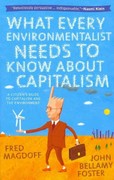Question 4 (20 points) This question considers a time-varying inflation target in the New Keynesian model. Consider the following set of linearized equilibrium conditions for the standard New Keynesian model, but where the policy rule includes a stochastic inflation target it. (5) it = BE (# +1) + ky (6) Monetary policy follows a rule: it = it + $(it - it ) (7) where #, is the inflation target, which is stochastic and follows an AR(1) process it = pit- 1 + et (8) et is i.i.d. It is the output gap. In deviations from steady state: it is the nominal interest rate and it is inflation. Although this model is written in terms of a time-varying inflation target, everything has still been linearized around the usual New Keynesian steady state with zero inflation. 0 and 0 0 is required to ensure a unique stable solution for inflation in this flexible price model and find the stable solution for inflation e) When p = 1, how does the result for inflation in part (d) compare to part (c) under sticky prices. Briefly discuss.Question 3 (50 points) Consider the following economy. Time is discrete and runs forever, t = 0, 1, 2,... The economy is populated by two types of agents (a measure one of each): farmers and workers. Farmers own a piece of land that pays a stochastic income y, every period. We assume that y, is i.i.d. across farmers and time, and that y ~ N (7, o'). Farmers use all their time working their land. Their preferences are given by u(c) = _ exp(-yc) for some y > 0. For simplicity, we assume that consumption of farmers can be negative, that is c E R. Moreover, farmers can save (or borrow) in a non-state contingent and non-defaultable asset a, which has a rate of return r. Farmers face the following "No- Ponzi" condition on assets 1 +3 (1 + r)' 7 20. Moreover, farmers can produce and hold capital, k, which is rented to the representative firm in competitive markets (1 unit of final consumption good produces 1 unit of capital). Let r" be the rental rate of capital and o the depreciation rate. Unlike farmers, workers don't own land, and they use their available time to work in the representative firm. Assume each worker is endowed with one unit of time. They cannot trade the asset a, but they can produce and hold capital, k (with the same technology as farmers). Their per-period utility is given by u(c), with u'(c) > 0, u"(c) 0 and o > 0. Z, is a household preference shock, which is a way of generating shocks to demand. The production side of the model is the standard New Keynesian environment. Monopolistically competitive intermediate goods firms produce an intermediate good using labor. Intermediate goods firms face a probability that they cannot adjust their price each period (the Calvo pricing mechanism). Intermediate goods are aggregated into a final (homogeneous) consumption good by final goods firms. The production side of the economy, when aggregated and linearized, can be described by the following set of linearized equilibrium conditions (the production function, the optimal hiring condition for labor and the dynamic evolution of prices): (3) ( 4 ) *, = BE,(1,+1) + Amc, (5) The resource constraint is: (6) Monetary policy follows a simple Taylor Rule: i, = d.#, (7) The (linearized) preference shock follows an AR(1) process: & = pa-, + er (8 ) es is i.i.d. In percentage deviations from steady state: me, is real marginal cost, &, is consumption, in, is the real wage, i is hours worked, y, is output. In deviations from 3 steady state: i, is the nominal interest rate, it, is inflation. A is a function of model parameters, including the degree of price stickiness." Assume that o, > 1, 0










